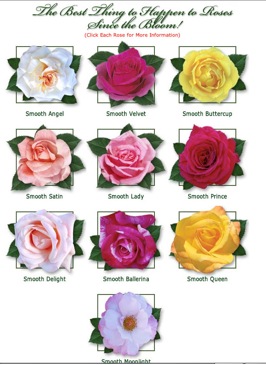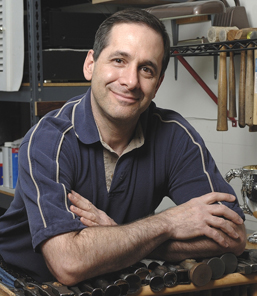
The Modern Butlers’ Journal volume 11, issue 3
International Institute of Modern Butlers
 Message from the Chairman
Message from the Chairman
In private service, we each have standards we have set and look for in those who are about to employ us, which we balance against various factors to decide in the end whether or not we want to work for that employer. Hopefully, we do not have our backs against the wall financially to the extent that we are obliged to accept any position offered, no matter that alarm bells may be ringing.
There is one employer characteristic that bears highlighting, however, because it is an alarm bell so strident that it might be wise to heed it, no matter how many bill collectors are at the door.
Nobility of old in Europe, and the “nouveau riche” merchants, such as the Rothschilds, were at pains to differentiate themselves from “commoners” — people they regarded as fundamentally inferior and even degraded. Perhaps surprisingly in our supposedly enlightened age, one still sees this impulse and mindset today in prospective employers of household staff, sometimes openly expressed, but usually well masked. Their own staff can sometimes be heard expressing the same opinions, having mentally fallen into the mindset of their employer.
One etiquette consultant for one of the most influential people in the world hosted just such a point of view—a scathing horror of anything that was not “above the salt” (from Mediaeval times, when the order of precedence at the lord’s table had those of inferior rank sitting below where the salt was placed). The result was an unprecedented exodus of staff (they were not sufficiently “pretty” or “handsome” to be acceptable to the client and guests, etc.) and a reputation at the property that made it hard to hire more—the alarm bell had been sounded for other potential employees in the area.
The problem with this judgmental approach to other people is that it invariably results in the demise of the haughty person him- or herself, as he or she is continuously causing harm to others. And funnily enough, that person himself or herself becomes more degraded than the people he or she vilifies for the simple reason that this is what happens to people who cause harm. The person digs his own grave, sneer by sneer, and whether it be a colleague or an employer, the end result is a far-from-optimum work environment.
As a note, the private-service world is a microcosm for the world at large, where the impulse to denigrate others has existed, and still does exist, in individuals and groups who work hard to raise their own idea of their own importance and value through the mechanism of sneering at others, and finding cause in those sneers to then target those others. Take the militarization of the police in the US, which has been accompanied by consultants and trainers advising the police that the real enemy is not the criminal, but the amorphous terrorist; police undergoing the training are told that a terrorist lurks in the bosom of every American. In other words, the police have been redirected from targeting criminals to the much more easily targeted, socially upright citizen. Just as you probably see this as a topsy-turvey/upside-down state of affairs, so, too, is the employer who insists on elevating his own importance by sneering at his employees, instead of considering them as fellow human beings who, just as the employer himself does, tend to perform better and rise to the occasion by encouragement.
Able individuals and employers manage their areas competently, without any effort to denigrate others, and those are the employers who receive good and cheerful service, because as the cliché goes, what goes around, comes around.
My advice is to be on the lookout for any supercilious (behaving or looking as though one thinks one is superior to others, from Latin supercilious meaning haughty, itself from super cilium meaning eyebrow—as in that dreaded “raised eyebrow” signal) signs and attitudes during the interview process, and politely decline should you notice it—for it will mean a life of unappreciated servitude—that is, of course, unless that is the life you want.
Butlers in the Media
We’ve never given much airtime to Butlers-in-the-Buff, a particularly inappropriate use of the word “butler,” for to dignify them with any airtime at all would be to play into their motif of attracting attention to themselves with nothing more valuable than the titillation and licentiousness (promoting or engaging in temporary sex with many) that they offer, and using our profession, which stands for the opposite, to do so. A recent article recently excoriated (roundly criticized) B-in-the-B for teaming up with a bath company to offer single ladies baths on Valentine’s Day. As B-in-the-B have joined the ranks of the oldest profession, they will probably be with us for a while longer, but as they become increasingly desperate to stay relevant while offering so little, their demise as an apparent front group for our profession can be predicted with some degree of certainty.
This month’s cataloging of items drawing upon our profession during the marketing process includes a Chinese made, discounted “3-in-1 Mixer, Coffee Grinder & Food Processor” Butler; a Chinese mobile-laundry service called “Bear Butler,” complete with a photograph of a black bear wearing a black top hat; and the requisite Butler robots: Care-o-bot from Germany, retailing for $250,000 approximately, that will fetch drinks, answer the door, and take out the rubbish/trash.

At such prices, maybe they do perform a service for the profession: making it clear to potential and current employers what a good deal their human butlers are. The other robot butler that made the news was a cut-rate model called Origibot, retailing for $900 approximately, with the owner’s iPAD/tablet being inserted for the head, and offering to bring things it can grasp in its one hand.
 Letters to the Editor
Letters to the Editor
I am eager to transition my career to domestic service. I hold a degree and several years experience in Culinary Arts and am seeking a position which will allow me to demonstrate those skills as well as provide further service as a House Manager or the like. Can you recommend a course of action? Do you know of any Butler apprenticeships to be found? GJ
Let’s Talk about Spirits, Part 13
by Amer Vargas
Arrack
Today we travel to Asia to learn about Arrack—not to be confused with Arak, which is a raki-, ouzo-, or pastis-like, grape-based, anise drink.
Although nowadays arrack is the name of the particular drink we are about to discuss, in the past the word referred to any distilled spirit, as recorded by an English explorer in the Indies, who wrote in the nineteenth century: “The natives call our gin, English arrack.”
It is understandable that the concept of Arrack has changed over time, as it is known to be one of the oldest distilled spirits in the world.
Anyway, back to the present, Arrack is a very well-known liquor produced in different countries of Asia, mostly in India, Sri Lanka, the Philippines, and Java (an island in Indonesia), each of these countries providing a special character to their spirit.
In general, we talk about two kinds of Arrack: Batavia Arrack and Ceylon Arrack.
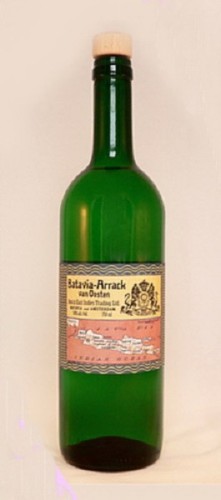 Batavia Arrack is named after Batavia, the old name for Djakarta, the capital city of the island of Java. This Arrack is made from a mash consisting of molasses (the by-product of refining sugarcane) and water, to which are added dried cakes of red rice and other botanicals, and a measure of yeast and fungi spores that ferment the mixture. Once the mash is fermented, it undergoes distillation in traditional pot stills. The final drink is a transparent and clear spirit with a full-bodied, sharp and herbaceous, sour taste with a long, oily finish. As it is not too pleasant when taken straight, it is commonly used in mixers and cocktails. Its final presentation contains an average alcohol by volume of 50%.
Batavia Arrack is named after Batavia, the old name for Djakarta, the capital city of the island of Java. This Arrack is made from a mash consisting of molasses (the by-product of refining sugarcane) and water, to which are added dried cakes of red rice and other botanicals, and a measure of yeast and fungi spores that ferment the mixture. Once the mash is fermented, it undergoes distillation in traditional pot stills. The final drink is a transparent and clear spirit with a full-bodied, sharp and herbaceous, sour taste with a long, oily finish. As it is not too pleasant when taken straight, it is commonly used in mixers and cocktails. Its final presentation contains an average alcohol by volume of 50%.

Ceylon Arrack, on the other hand, derives its name from what British colonizers called the island of Sri Lanka at the beginning of the nineteenth century—the name being changed to Sri Lanka in 1972. The production of this Arrack is completely different to that of its Batavia counterpart, because the main ingredient is the sap from coconut palms. The sap is extracted by “toddy tappers” (‘toddy’ is the name given to the coconut palm-tree sap after fermentation; ‘tappers’ because these men make cuts in the flower stems at the top of the coconut palms and then tap them to induce the sap to flow. Tappers gather the sap in receptacles they attach to their waists.
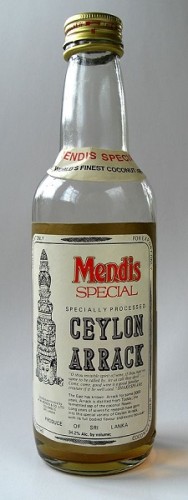
The sap collection is commonly conducted during the morning hours, in order to allow the heat of the day to turn on the fermentation process by the action of the yeasts present in the sap itself. In a matter of hours, the sap turns from a slightly sweet, milky water, into the (sort of) palm wine called toddy. After processing the toddy through column stills, the spirit is ready to be mixed with water to achieve 40% alcohol by volume and is then bottled.
The final drink is light amber and golden in color, with a refined, dry taste and a rich and long, buttery finish with sweet aromas that can be enjoyed in many different ways—on the rocks, with water, or with a mixer.
Your turn: Batavia or Ceylon? Enjoy!
Mr. Vargas is the Institute’s Vice President for Europe and can be contacted via AmerVargas at modernbutlers.com
 When it Comes to Housekeeping
When it Comes to Housekeeping
by Professor Richard Ratliff
The Secret to Housekeeping Success
The reputation of feather dusters has taken a beating in recent years. With one exception, the criticism may be well deserved. But the one exception is a big one—the ostrich feather duster. I am told that darker feathers are better than lighter ones. The feathers in my duster are black.
I have tried cotton, soft wool, and microfiber dusting rags. I have tried dusting mitts in natural and microfiber varieties. I have tried lamb and sheep wool dusters. I have tried feather dusters made of the feathers of various fowl. Rags from cut-up cotton T-shirts, very lightly dampened with water, followed by a quick swipe with a completely dry one, still are a good option. One problem I have found with rags and mitts is that you need something else to get into tight edges and crevices.
But I continue to prefer my old-fashioned ostrich feather duster, with a short wooden handle. It takes only a very light touch and one or two quick passes over a surface for it to be dust free. I use it for any dusting I may do, except for places that are very difficult to reach, which require a long wand.
I have joked that all I need do to dust is walk down the middle of a room and wave my ostrich feather duster in the air. That is not true of course, but it is true that the ostrich feathers seem to magically attract dust, even from the edges of louvered doors and books, venetian blinds, and the crevices of a sculpture and exquisitely carved frames of mirrors and fine art.
Ostrich feathers are easy to clean. Just shake the collected dust from the duster into a trash bin. Occasionally, the duster should be washed in a mild detergent. Shake the feathers around in the soapy water several times, squeeze the soapy water out (do not twist the feathers—just squeeze, or you will break the feathers), rinse two or three times in clear water, squeeze out the rinse water, and set the duster up to dry. Good as new! Once in a great while, I rub a little oil into the wooden handle.
No matter what duster you may prefer, remember that the best duster is the one that is used!
Of Butlers and Roses, Part 11 of 20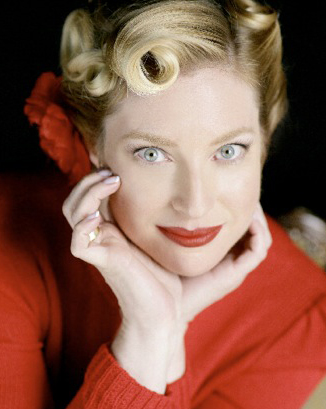
by GJ dePillis
Evaluating the Right Rose To Grow- More Thornless Roses
Recently, we discussed heirloom roses and how some of them have thorns and others are thornless, or nearly so.
Here are some tips and information on the planting and care of smooth-touch roses:
- Use a moisture meter to determine the best positions for these plants. Stick it in the ground for a reading, and also look for cooler/shadier areas in the garden. Three sources for moisture meters include these models of meters, and the pricier model that the Forestry Service uses, reportedly;
- Smooth-touch roses are hardy (able to survive outside during the winter) in Zones 5-11;
- In Zones 7 and below, protect the roses over the winter by mulching 12” up the plant;
- They prefer 6-7 hours of sun;
- When planting, dig a hole approximately twice as wide as the pot and place the plant in the hole. Fill with soil as needed, add rose food, and water thoroughly;
- These roses will grow to a height and width of 3-4 feet and form a nice, dense bush;
- Prune the plant once a year by cutting back to 1/3 its size in the late spring.
To determine which zone you are in, click on the interactive USDA zone map. While each property has its own “micro climate” zone (a slope near a babbling brook will be cooler than a garden near black asphalt, which can make the surrounding areas about 10 degrees hotter), these zones are still good reference points.
For any questions about how to best grow thornless roses and anything related to them, you can contact Ms. Judie Evrard Brower at judie at sover.net.
A good selection of thornless roses follows:
| Variety name | Color | Fragrance | Notes |
| Smooth Angel | Soft pink | Tea rose scent | Standard rose |
| Smooth Velvet | Dark pink to red | Light sweet scent. | Grows to six feet, good for pillar climbing |
| Smooth Prince | Dark cerise pink/red | Tea rose scent | Repeat blooming. Can grow in a pot |
| Smooth Ballerina | Dark pink with white stripes (Carmine red) | Tea rose scent | Single and cluster blooms |
| Smooth Buttercup | Yellow | Light sweet scent | Grows rose clusters |
| Smooth Queen | Dark Yellow | Tea rose scent | Ruffled edge on petals, cluster booms. Compact bush |
| Smooth Satin | Soft peach-pink | Light perfume | Blooms vary by climate. Single blooms. Some clusters |
| Smooth Lady | Soft salmon pink | Light Tea rose scent | Standard rose |
| Smooth Delight | White with hint of pink | Light Tea rose scent | Dark green leaves. Scented petals. |
| Smooth Moonlight | Soft white with touch of pink on edges | Faint scent | Open flower style with prominent center stamen. About twenty petals |
Thornless roses are also available in the US at:
- Some Lowe’s Home Improvement centers (not in Northern New England, the Gulf Coast, the Rocky Mountain States, Idaho, Wyoming, South Dakota and North Dakota);
- Online at www.WillowCreekGardens.com or 760-721-7079.
- Smooth Touch, which only sells (near) thornless roses; with 25 distributors, there likewise are some regions they do not service;
- Contact Jon McGuffin at jon at easytogrowbulbs.com.
Ms. dePillis is a freelance contributor to the Journal who is based on the West Coast of the United States. She can be reached via depillis at gmail.com
Consulting the Silver Expert
by Jeffrey Herman
Q: What’s the difference between machine engraving and hand engraving?
A: Machine engraving isn’t true engraving in the sense that metal isn’t removed, it’s actually burnished (polished by rubbing). That’s why you’ll feel a slight ridge when you run your finger over it. It’s not unlike when you draw a picture in the sand. Hand engraving is the process of cutting shallow lines into metal with a sharp graver, reproducing artwork which has been drawn on a metal article. Unlike machine engraving, hand engraving removes metal when cutting. Bright cutting is another form of engraving which is very reflective because of its flat, angled cut.
Mr. Herman continues to offer his services to our readers for any questions you may have about the care of silver. Either call him at (800) 339-0417 (USA) or email jeff at hermansilver.com
The Institute is dedicated to raising service standards by broadly disseminating the mindset and skills of that time-honored, quintessential service provider, the British Butler, adapted to the needs of modern employers and guests in staffed homes, luxury hotels, resort, spas, retirement communities, jets, yachts, & cruise ships around the world.



